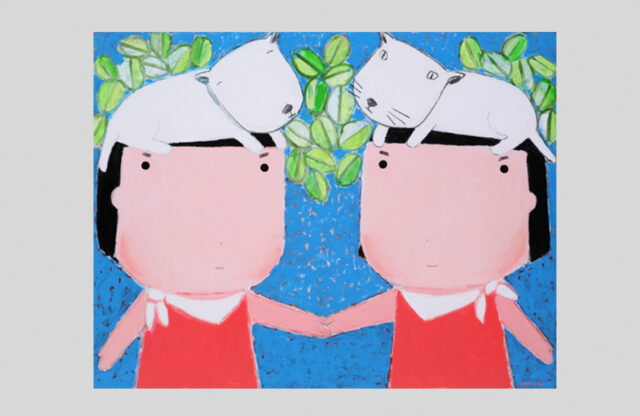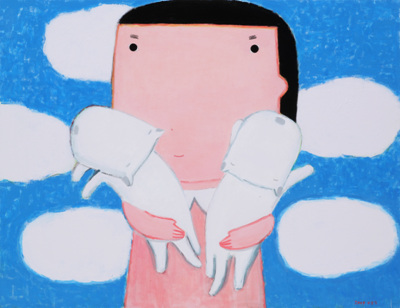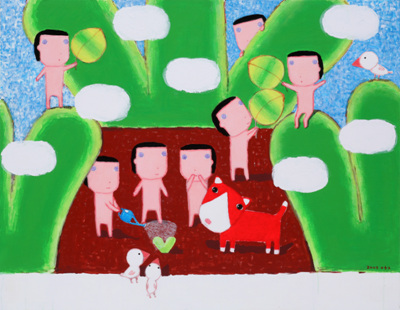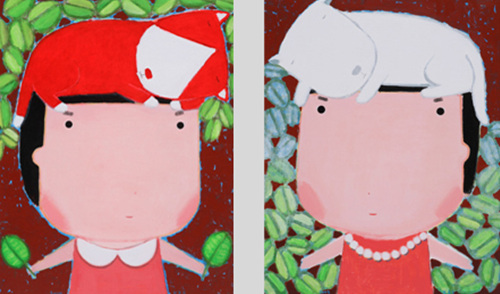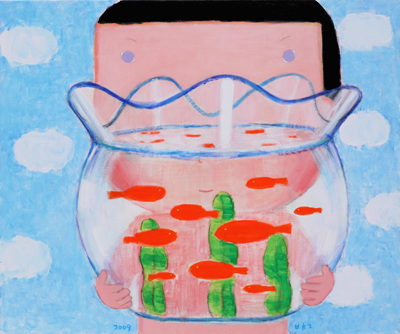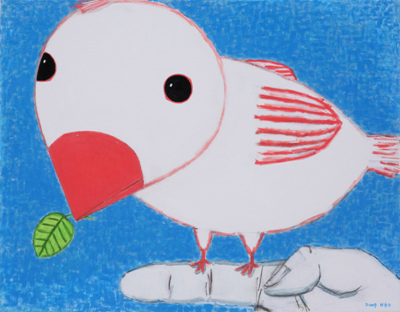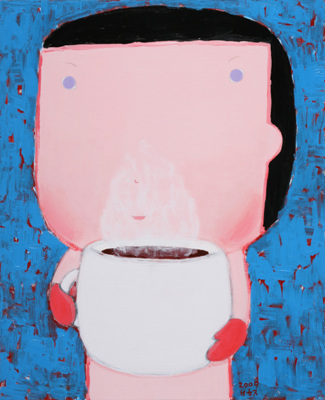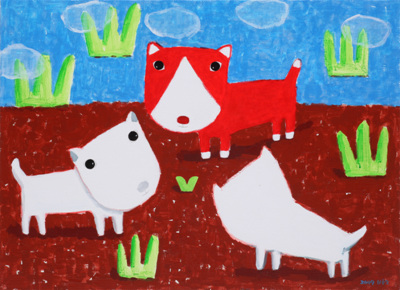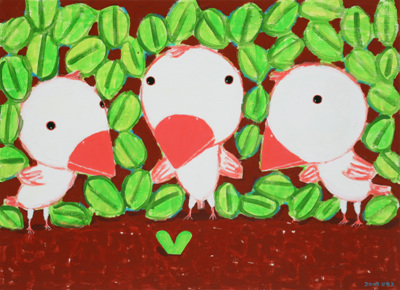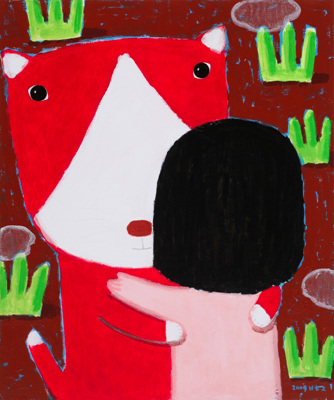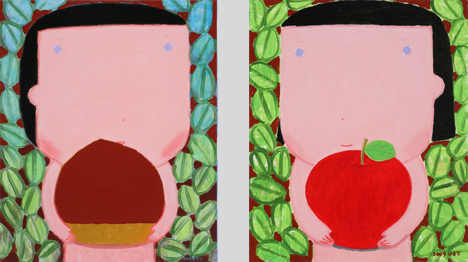Park, Hyung Jin
INSA ART FESTIVAL
Park, Hyung Jin
2009.11.18 ~ 11.24
The Tale of Children Who Have Less, Yet Exist More
By Kong Ju-hyung, Art Critic
What must humans have at least, so as not to lose dignity? Henry David Thoreau(1817-1862), American philosopher and writer, returned home to Concord, Massachusetts, at the age of 28, to seek the answer to this question, after graduating from Harvard University. Staying by a lake in the woods of Concord, he dreamed and wrote, from the spring of 1845, through the fall of 1847. What he pursued was a humanistic life from minimum matter. What is required to live such a life nowadays I wonder? The largest dwelling Thoreau used was a log cabin some called a cottage. This cabin, built for 28 dollars, was 4.6 meters long, 3 meters wide, and 2.4 meters high. A wood bed, table, and desk, a hearth, and chairs, the bare necessities for a humanistic life were set within the house.
Park Hyung-jin raises a discourse with Thoreau. Park and the American philosopher want to know how to achieve maximum existence through minimum possessions. The issues they raise are the same, but they are different in their ways for approach. To address their problem Park lives an everyday life, the same as yesterday, instead of giving up his everyday demands. Park depends on a congruous flow of mind, rather than advocating a grandiose slogan such as, “Eat as much as you work, produce as much as you eat.”
Park brings indispensable things to her canvas. Pets, coffee, clouds, and leaves, required for a free, humanistic life. They are extremely trivial when compared with expensive carpet, luxurious houses, and deluxe furniture. Park’s work appears special as it offers constant affection to these trivialities. We are all aware of the fatal results caused by our lack of concern for trivial occasions, exampled by the Broken Window Theory which argues, if a broken window in a building is not repaired, it will causes a major crime, and also Heinrich’s Law, stating, before a fatal accident occurs, 100 trivial symptoms, and 39 near-accidents occur. Park is well aware of the importance of trivialities, but her purpose of this pursuit is not for any enormous conclusion.
The pleasing tastes of marsh snails, fresh-looking sunflowers, brightly shining starlight, and a breathtaking sunset glow, depicted in Jung Chae-bong’s The Trivial is Precious, awaken our senses and enable us to look for suspended meaning.
In the center of an accident appears a lovely kid with the round eyes. On the kid’s head is a pet. The pet is like a fur hat protecting the child from the cold. Nearby, orange-colored fish swim, spurring vitality in the viewer’s mind. A cup of coffee emits steam. It is like a wise friend, advising us not to burn our palate. There are some gifts in a nature playground as well. Seven children peacefully share seven clouds. Even if they are sleepy while playing, there is no concern, for they have a blanket made of green leaves. What the artist considers significant here have commonalities: that is, the warmth that warms the body and mind.
The only thing here that creates a feeling of greed in Park’s work are her titles: the title of one of her paintings is My Pet, not merely a pet, My Puppy, not just a puppy, My Bird, not a bird. The pets in her paintings seem to be the children’s possessions. The reason why the artist has chosen such titles is not to make sure their ownership, or to affect their dignity through this ownership, but to express their affectionate love for such pets. Park’s work reflects a shock she felt when she witnessed a lovebird’s miserable death by attack from resident birds, her pathetic mind toward a cactus that is withering despite her warm care, and her memories of the red dog Dasook that often appeared in her paintings. These animals and plants she offered her affection and shared her emotions are not mere others. They are obviously part of her own possessions.
Park’s work depicts a repetition of everyday life. And there is no work she must do or nothing special. She is alone, but not lonely, and in silence, but not stuffy. Some worry the artist is too familiar to monotonous everyday rhythms, and that some fierceness disappears from her canvas.
“If a man does not keep pace with his companions, perhaps it is because he hears a different drummer. Let him step to the music which he hears, however measured or far away. It is not important that he should mature as soon as an apple tree or an oak. Shall he turn his spring into summer?”
As in the above phrases excerpted from Thoreau’s Walden, the artist intends to continue her work, coexisting with a cat with white fur and a lovebird with a red beak. Park’s work, read as a fairytale for both children and adults, always conveys a story with a happy ending. Her work always ends with the phrase “You and I have coexisted well.”, not with the sentence “The prince and princess lived a long happy life.”


